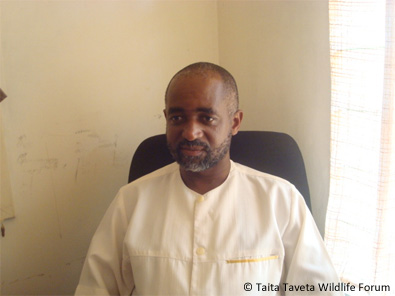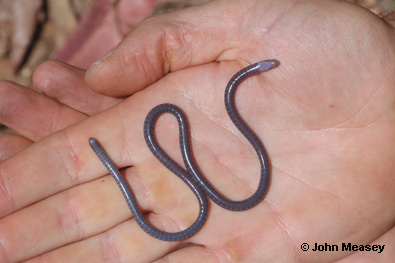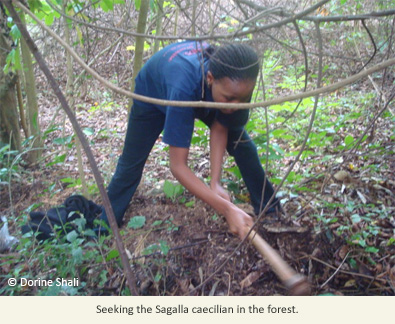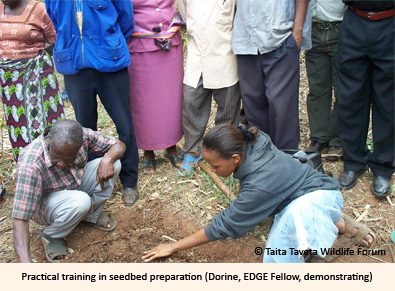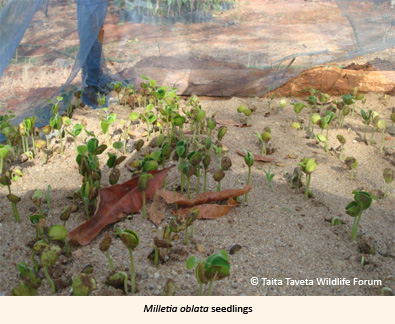I, James Mwang’ombe, am Dorine’s local supervisor and the Head of the Taita Taveta Wildlife Forum.
The Sagalla Caecilian conservation project is one of the very important projects to TTWF as it targets to conserve a critically endangered organism while at the same time enhancing livelihood generation and survival for the local community through integrated resource management. Towards this end, several approaches are being employed through the application of various legal instruments that the Kenya Government has put in place.
Chief among these is the Forest Act 2005 that provides for community participation in forest management through a Community Forest Association (CFA) and a Participatory Forest Management Plan (PFMP). The formation of the CFA is well underway with a preparatory meeting having been held with village representative. This will be followed by a capacity building workshop where the elected representatives will elect interim officials and the preparation of Articles of Association will be undertaken. This will be followed by an application for registration at the Attorney General Chambers or Registrar of societies.
Following closely are the steps for PFMP preparation where data collection is on-going. This week, Dorine assisted by other staff of TTWF will be carrying GPS mapping of the forest boundary which will then be followed by a plant inventory which among other things will provide a checklist of the species list and forest data/measurements.
The other legal instrument we are applying is the Water Act 2002 that also provides for the participation of the local community in water resource management. We have initiated or supported the formation of Lower Voi river/Sagalla Water Resource Users Association (WRUA) that has applied for registration at the Registrar of Societies and also a Sub-Catchment Management Plan is in place. TTWF is in the process of assisting the newly formed WRUA to prepare a proposal soliciting for funds to build its capacity from the Water Services Trust fund.
On alternative livelihood generation, TTWF has introduced fishfarming as a way of sustainable utilization of the wet areas. By constructing fishponds, the farmers are able to generate livelihood without having to drain the water thus contributing towards creating a niche for the caecilian.
This is supported by directing rehabilitating the habitat through re-planting of indigenous trees. Currently, TTWF is promoting planting of two indigenous tree species (one being endemic) re-introducing them to the area, among others. These are Milletia oblata (endemic to Taita) and Prunus africana (a tree with a huge commercial potential through sale of its bark used for manufacture of prostate-cancer management drugs).
We believe this multi-pronged approach targeting various facets of conservation is the best way to achieve the overall conservation of the critically endangered Sagalla Caecilian i.e. policy and legislation to institute proper environmental management, reducing pressure on the natural resource by introducing alternative livelihood options and by involving the local people to manage their own resources.
There is a lot of work to be done and we are ambitious, however, we have challenges. These include inadequate finances and lack of equipment especially motorvehicle among others. We are extremely grateful to the Zoological Society of London for coming to our aid, and we appeal for others to also do so.
